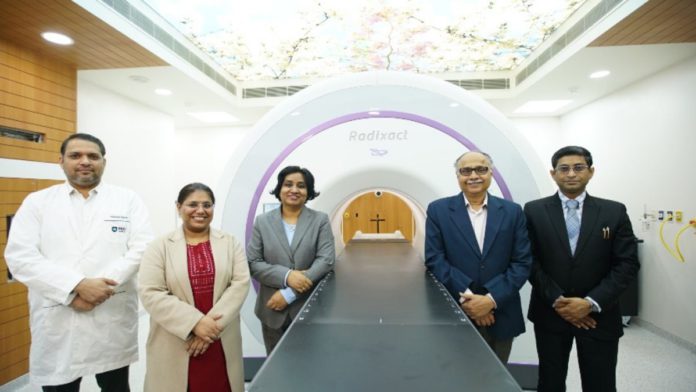Max hospital Saket launched its new AI-powered cancer treatment technology named Radixact X9 Tomotherapy. It is a highly capable artificial intelligence-enabled treatment system that is integrated with the 2nd generation synchronization respiratory motion management system.
The Department of Radiation Oncology recently launched the technology at Max Institute of Cancer Care (MICC), Saket.
The Radixact X9 uses Artificial Intelligence to track and provide treatment in real-time, guaranteeing that the tumor is not missed due to chest or abdominal breathing movement during radiation, which ensures the high accuracy of tumor detection without worrying about breathing movement of the chest or abdomen during radiation.
Read More: Gupshup acquires Cloud Communication Startup Knowlarity
Dr. Charu Garg, Director of Radiation Oncology, MICC at Max Hospital Saket, said, “New radiation technologies have made it possible to precisely target and destroy the cancer cells while preserving normal cells of the body. With this new technique, the Department of Radiation Oncology at Max Institute of Cancer Care (MICC) Saket has added another milestone in its journey towards providing best-in-class healthcare services in the field of oncology.”
She further added that the launch of their new AI-based technology proves the Hospital’s commitment to cancer treatment and the welfare of cancer patients. The newly introduced technology eliminates or decreases tumors by combining the precision of intensity-modulated radiation therapy and an image-guided scan,
It uses a slice-by-slice approach to target the tumor (helical IMRT), allowing improved radiation dose management inside healthy cells. Experts claim that TomoTherapy is a next-generation advanced radiation therapy system that can deliver extremely precise radiation in even the most severe cancer patients.
Dr. Dodul Mondal from Max Hospital Saket said, “This technology not only allows us to perform high definition of IGRT but also enables monitoring of the changes in a tumor on a day-to-day basis.”
He also mentioned that this form of treatment turns out to be very beneficial in several cases where patients have earlier received radiation but require re-radiation.


